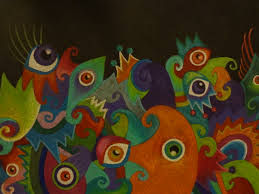Final Thoughts
To Kill a Mockingbird is a great book. The characters are fantastic and the plot wraps up nicely in the end. This book helps further our insight into the topic of secret lives. Some questions the class asked included, do we truly know the people around us and why do people live secret lives. The novel helps to answer these questions. We don’t know the people around us. The people around us could be hiding many secrets that make them who they are. The people we see around us are just the masks they wear to hide and protect themselves from society. We live these secret lives for protection. We protect others from bearing the burden of truth, much like how Mrs. Dubose knew she was close to death, but kept it a secret. We also protect ourselves from the harshness of society, much like how Boo Radley prefers to live in solitude. People hide their true selves from society, and you cant really know them until you step into their skin and walk around. Throughout the novel, there is one character who does not live a secret life and can see straight through the masks of other people: Atticus. Atticus understands people. He understands their thoughts, beliefs, and motives. As a father, he tries to teach Jem and Scout how to understand people, and at the end of To Kill a Mockingbird, Scout steps into Boo Radley’s shoes and walks around.
Character
The character my group focused on was Jem. During our literature circles, we talk a bit about Jem and what kind of character he is. We discussed how annoying Jem can be sometimes due to his inconsistency. One moment, Jem is a loving brother to Scout who likes to spend time with her, and the next moment, he hates her and tells her to go away. The only explanation provided is that Jem is going through a different phase of life, but this doesn’t satisfy my group. However, there is a part of the novel where Jem’s color shows. After Tom Robinson is declared guilty in court, Jem is devastated. He was confident that Atticus was going to win the court case, and his reaction shows something: Jem cares about people. Unfortunately, Jem doesn’t get the chance to show how he cares and make a difference in society. He is forced to accept the way things are.
*Note: I acknowledge the fact this this is very rough. It will be improved in the near future.






